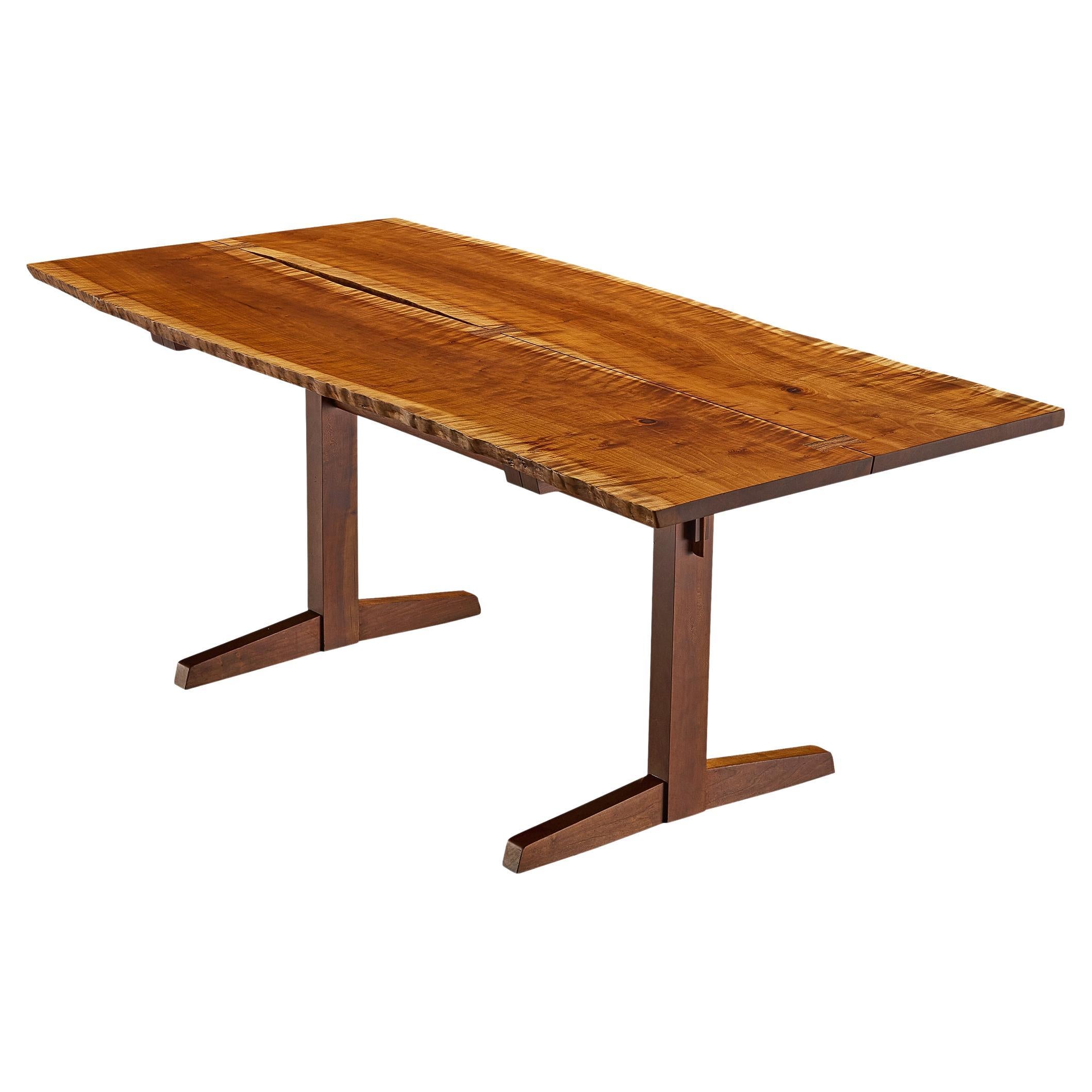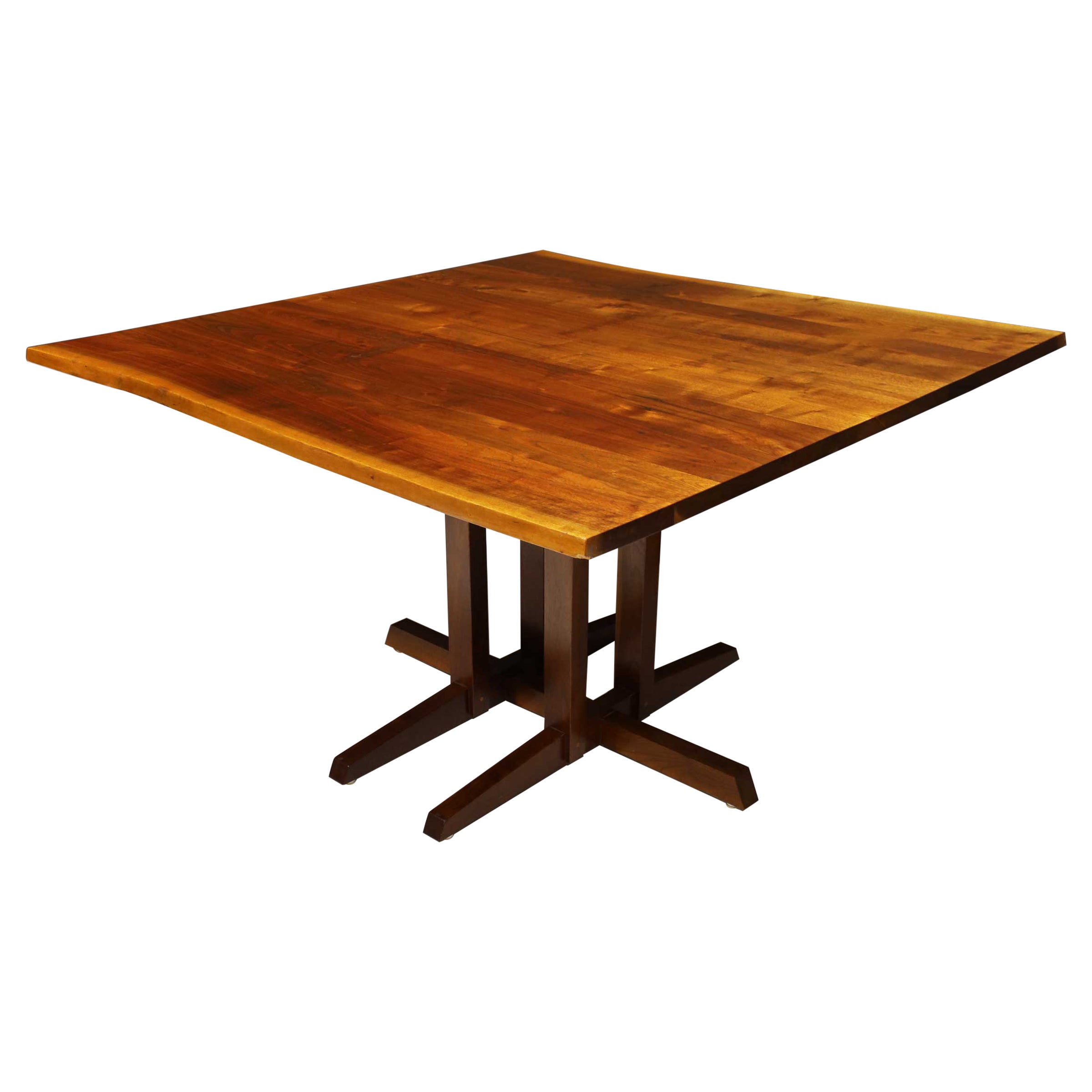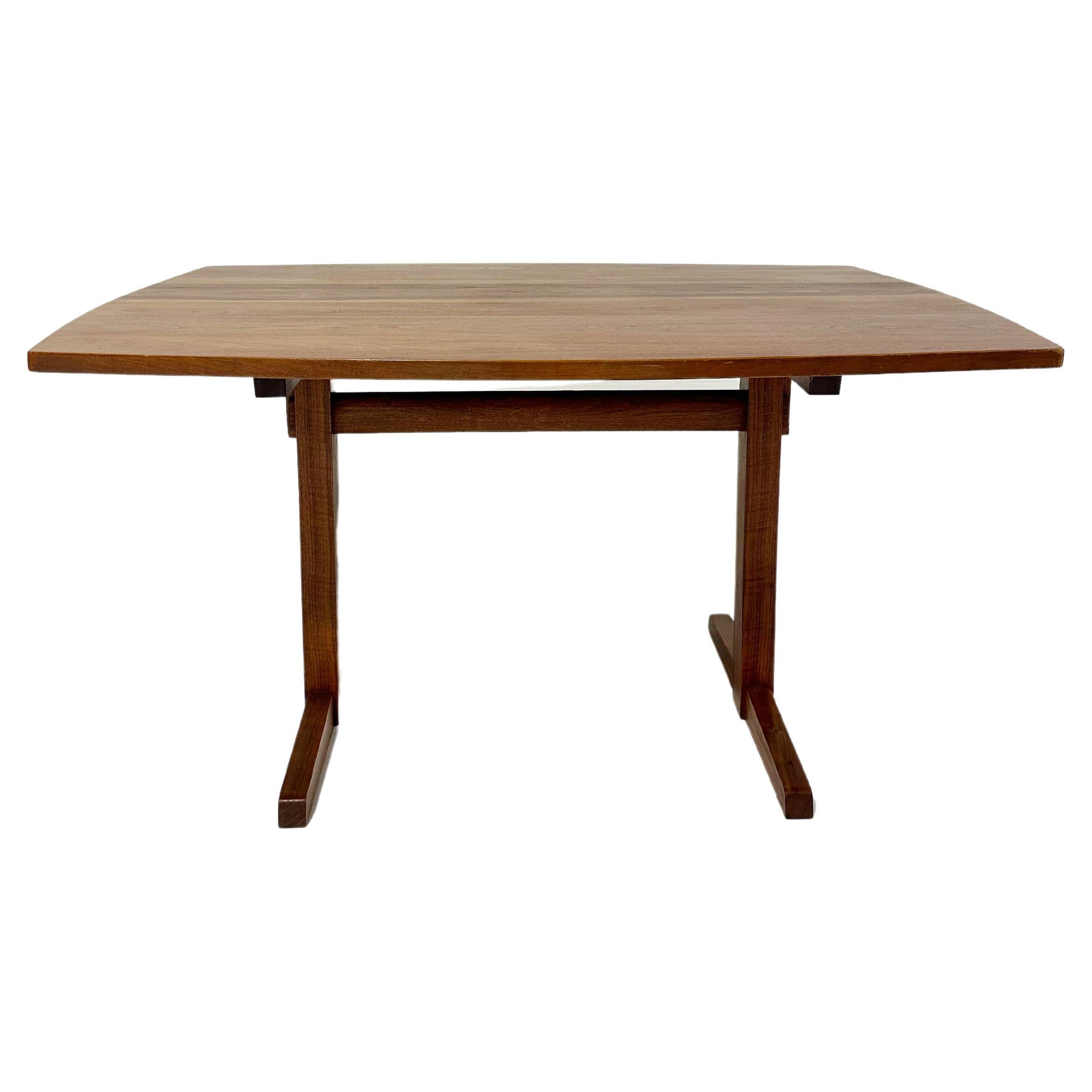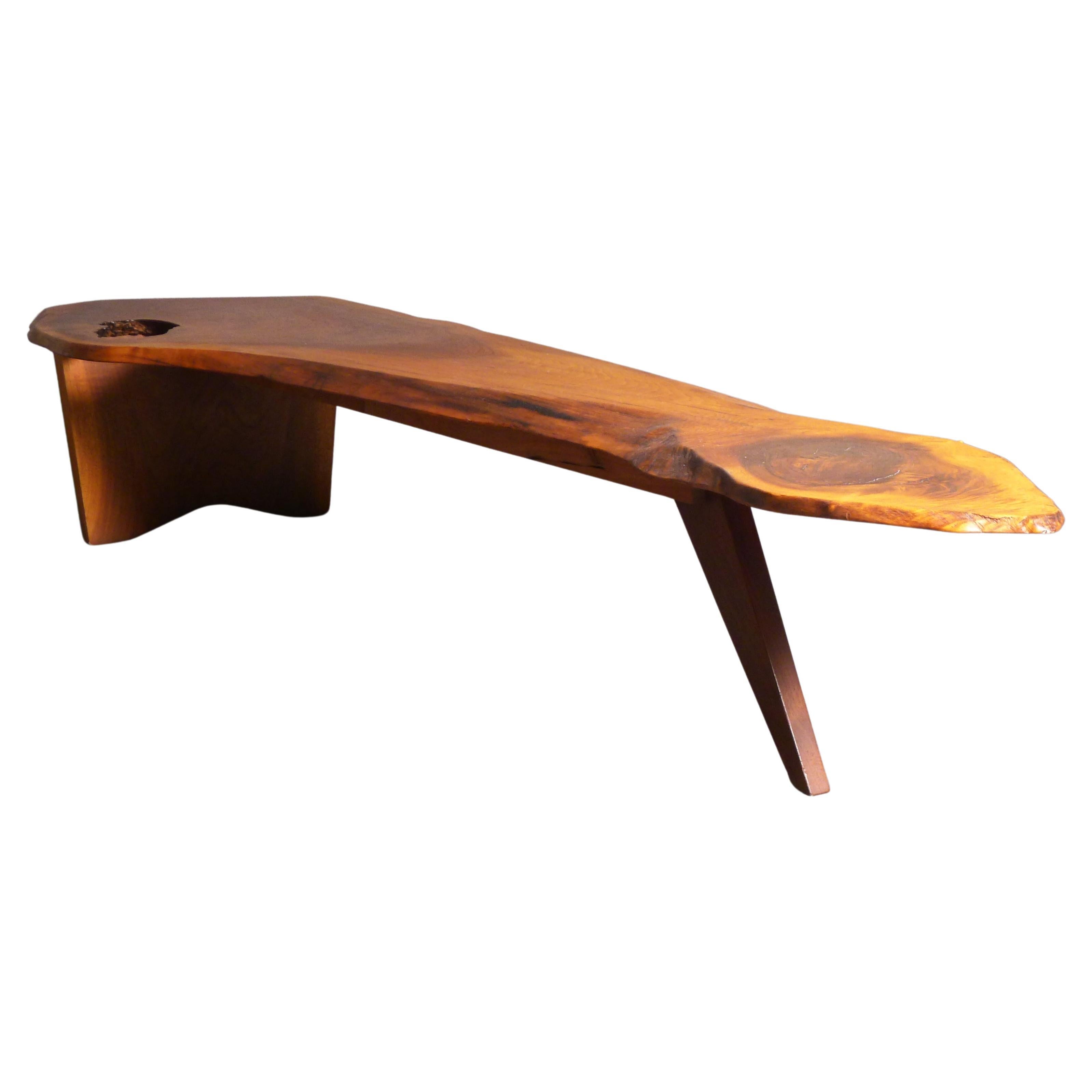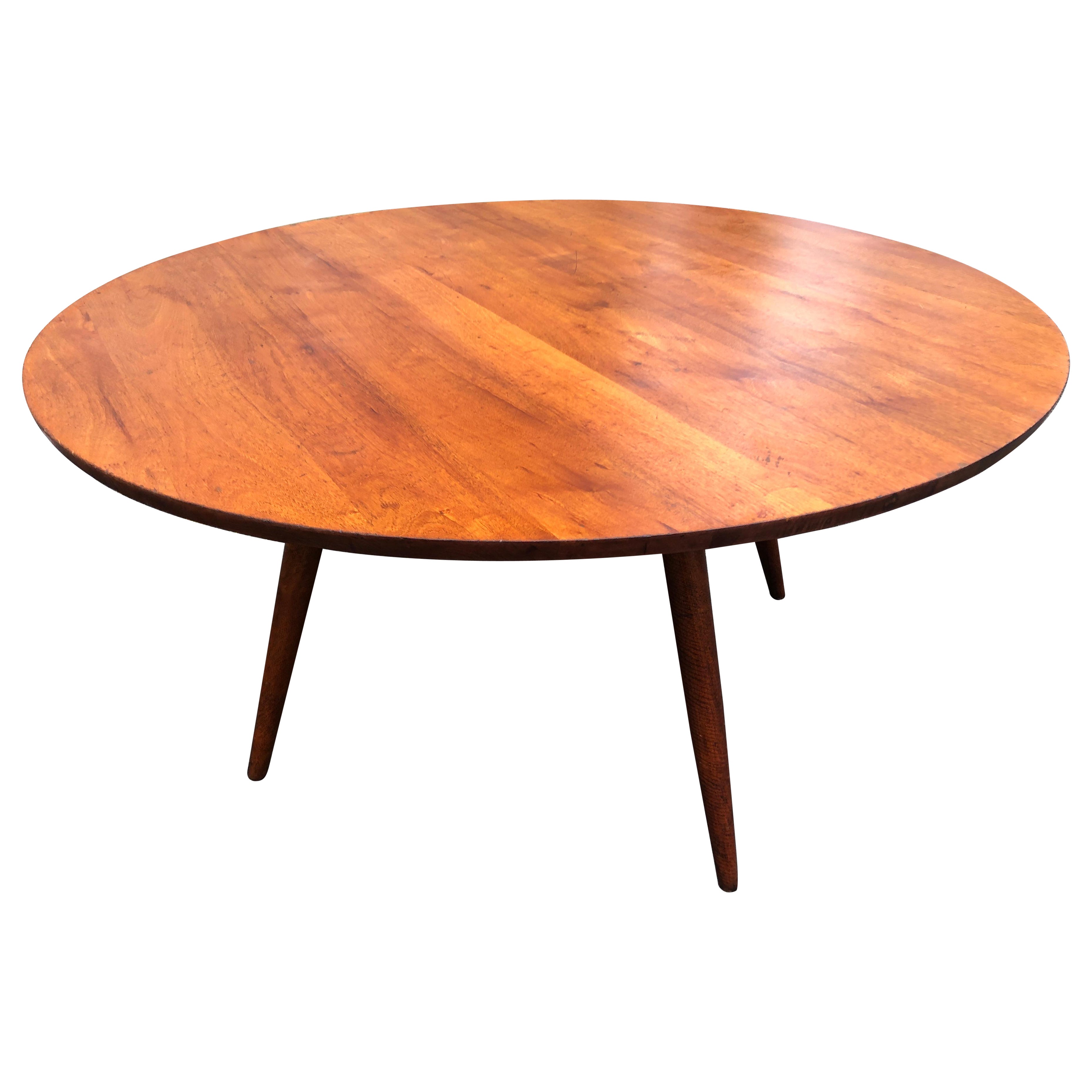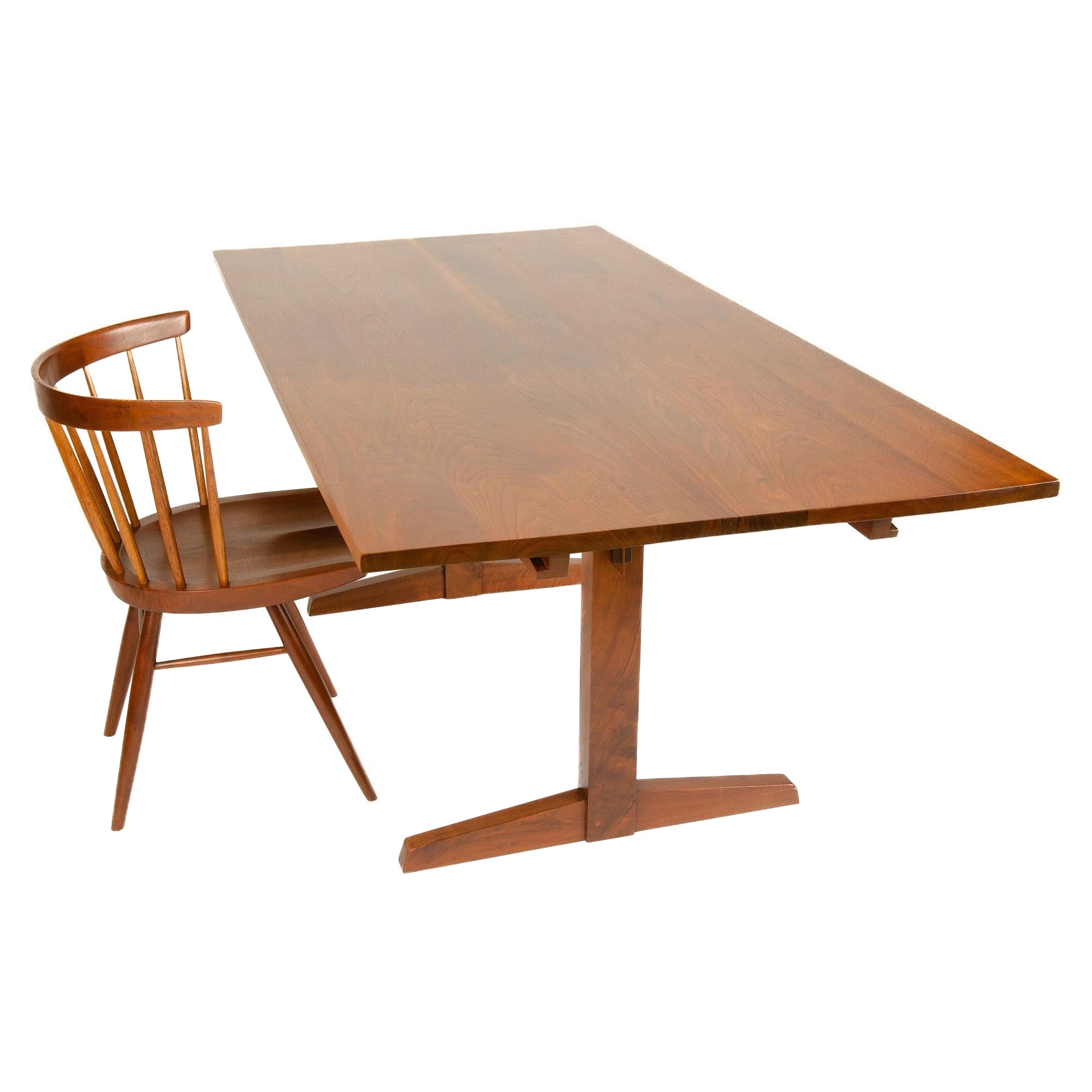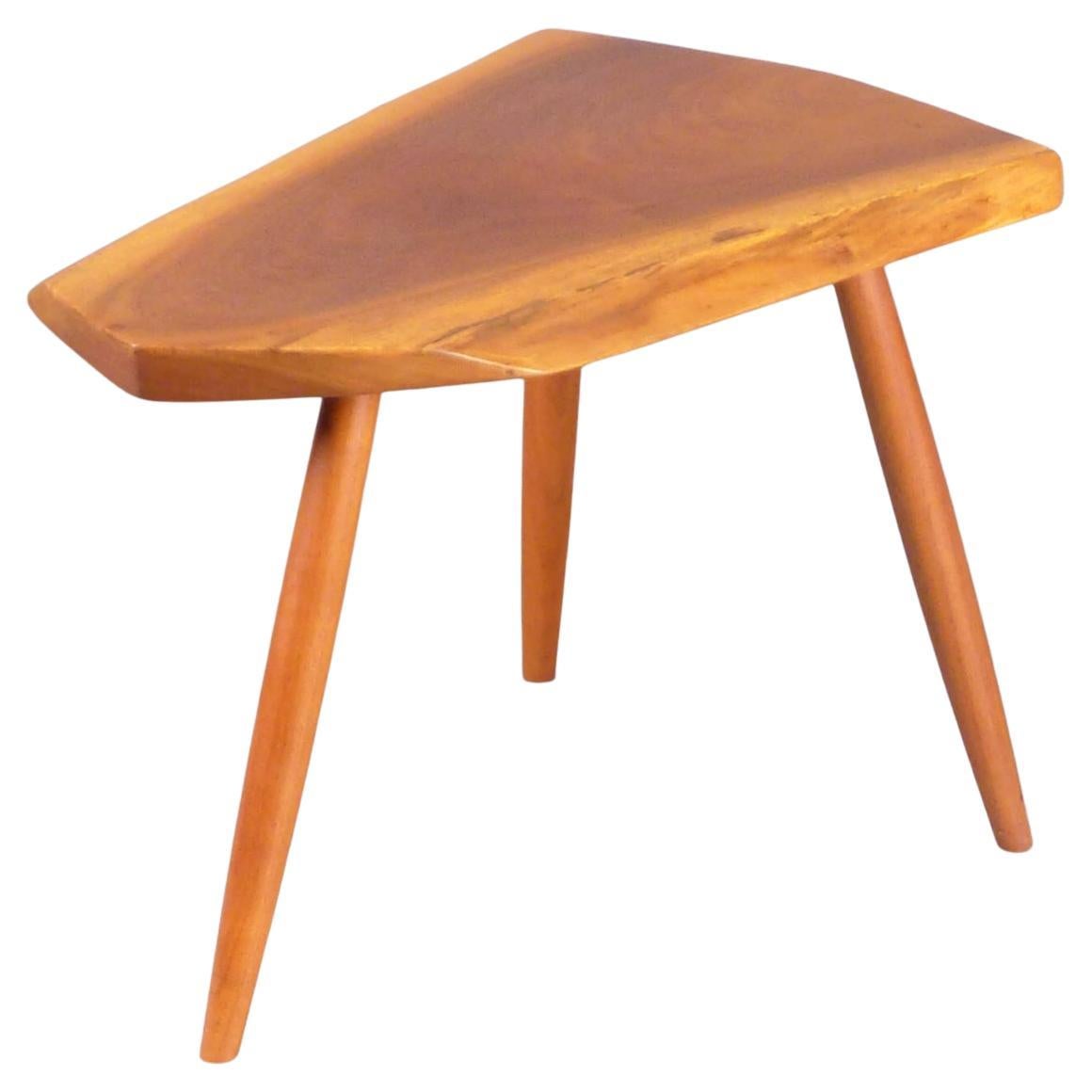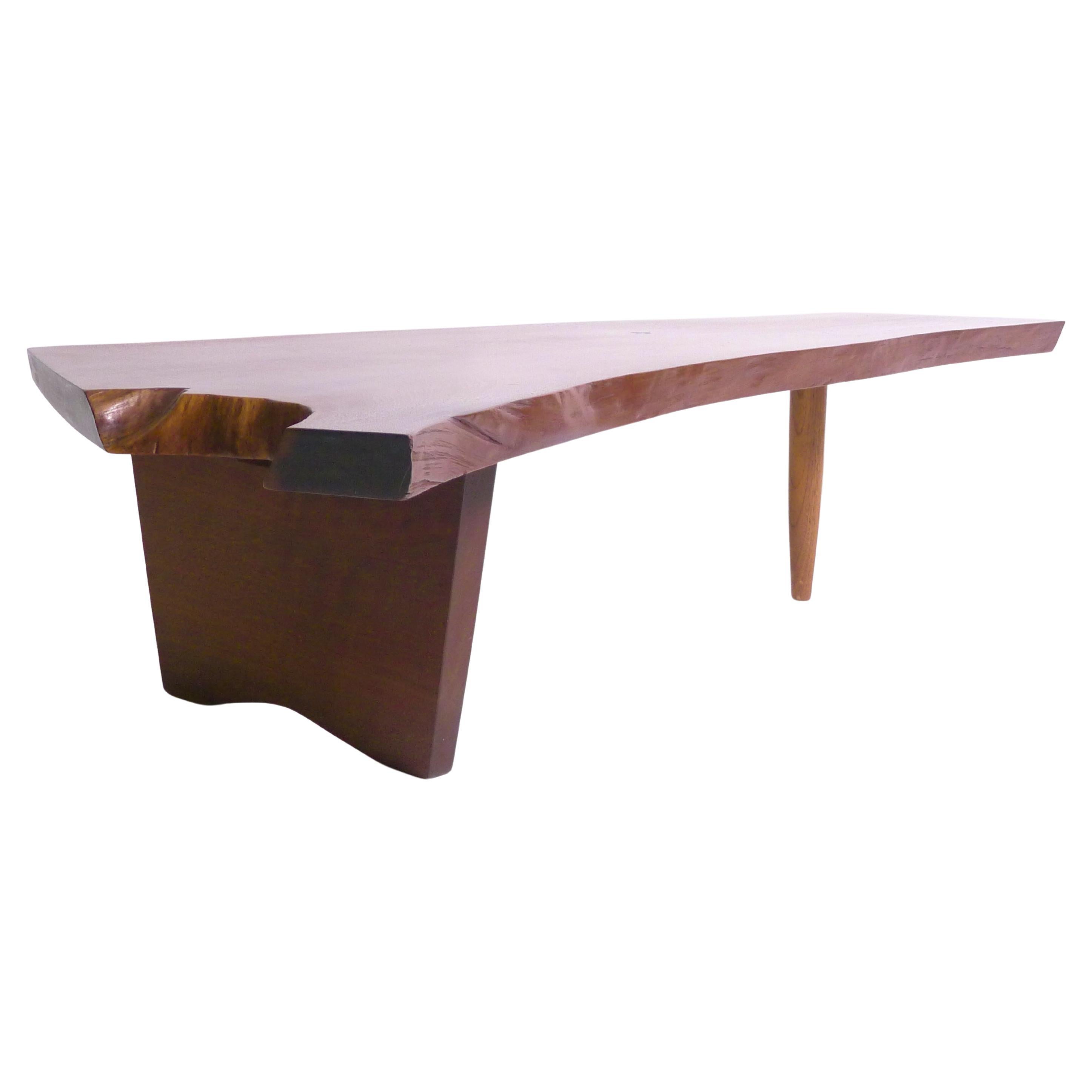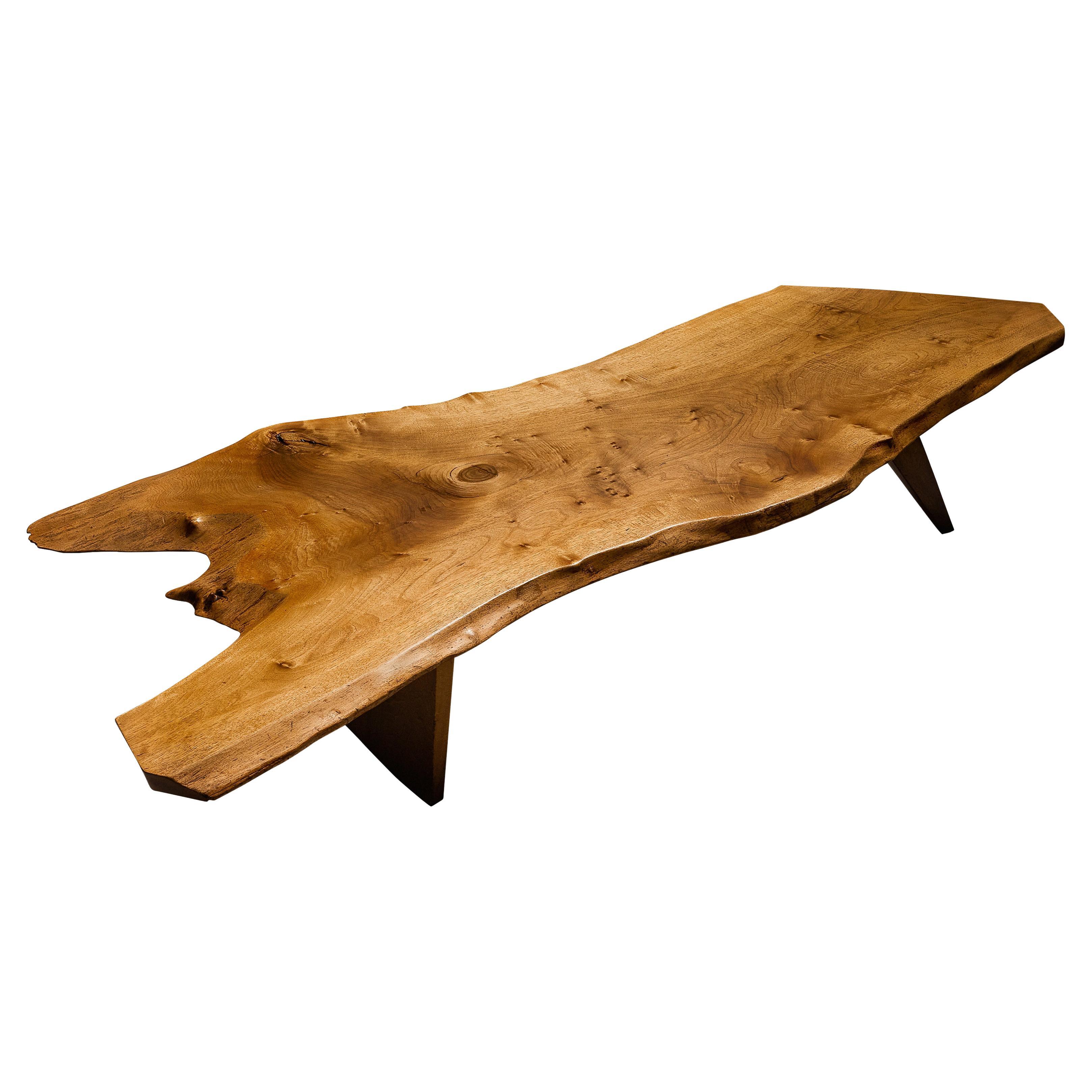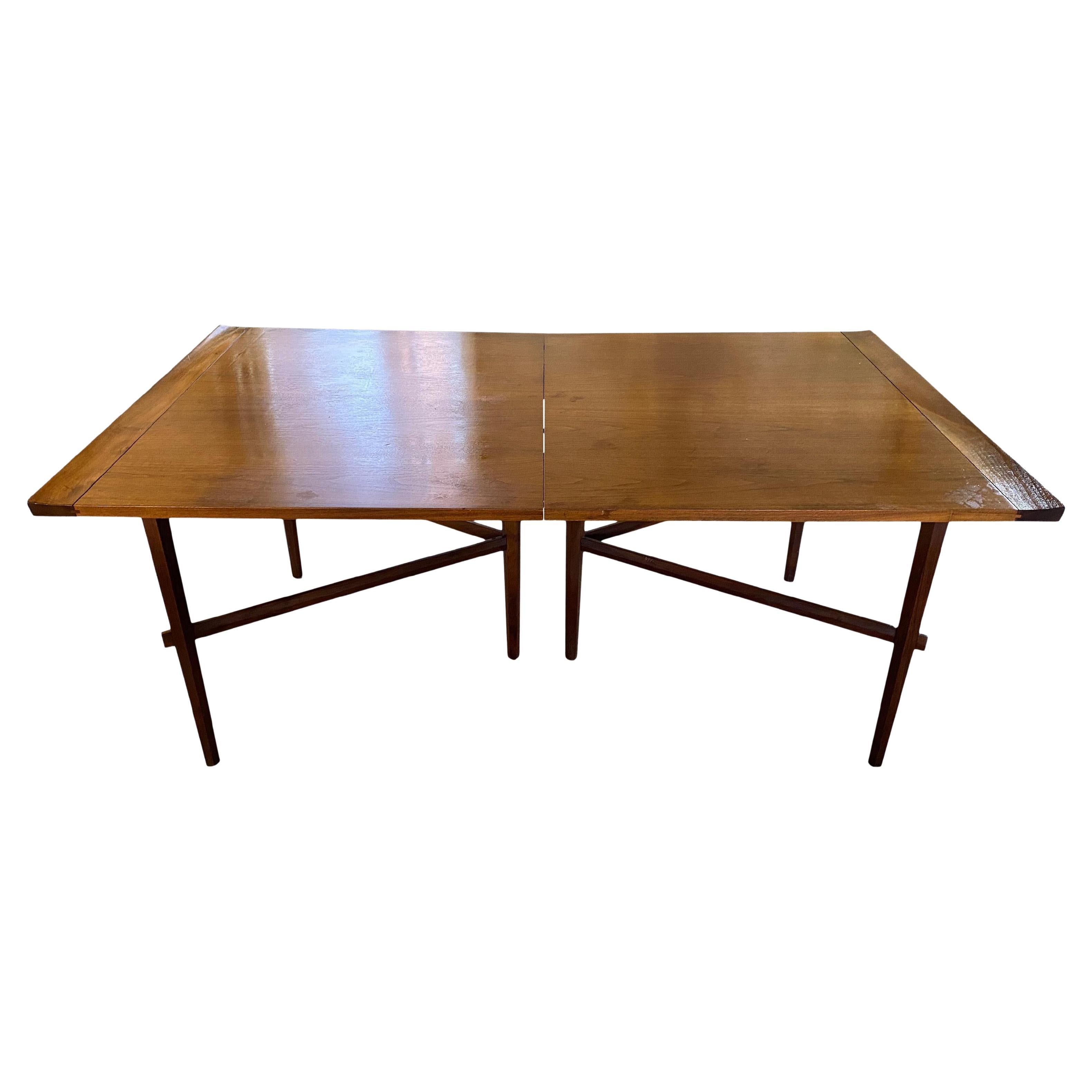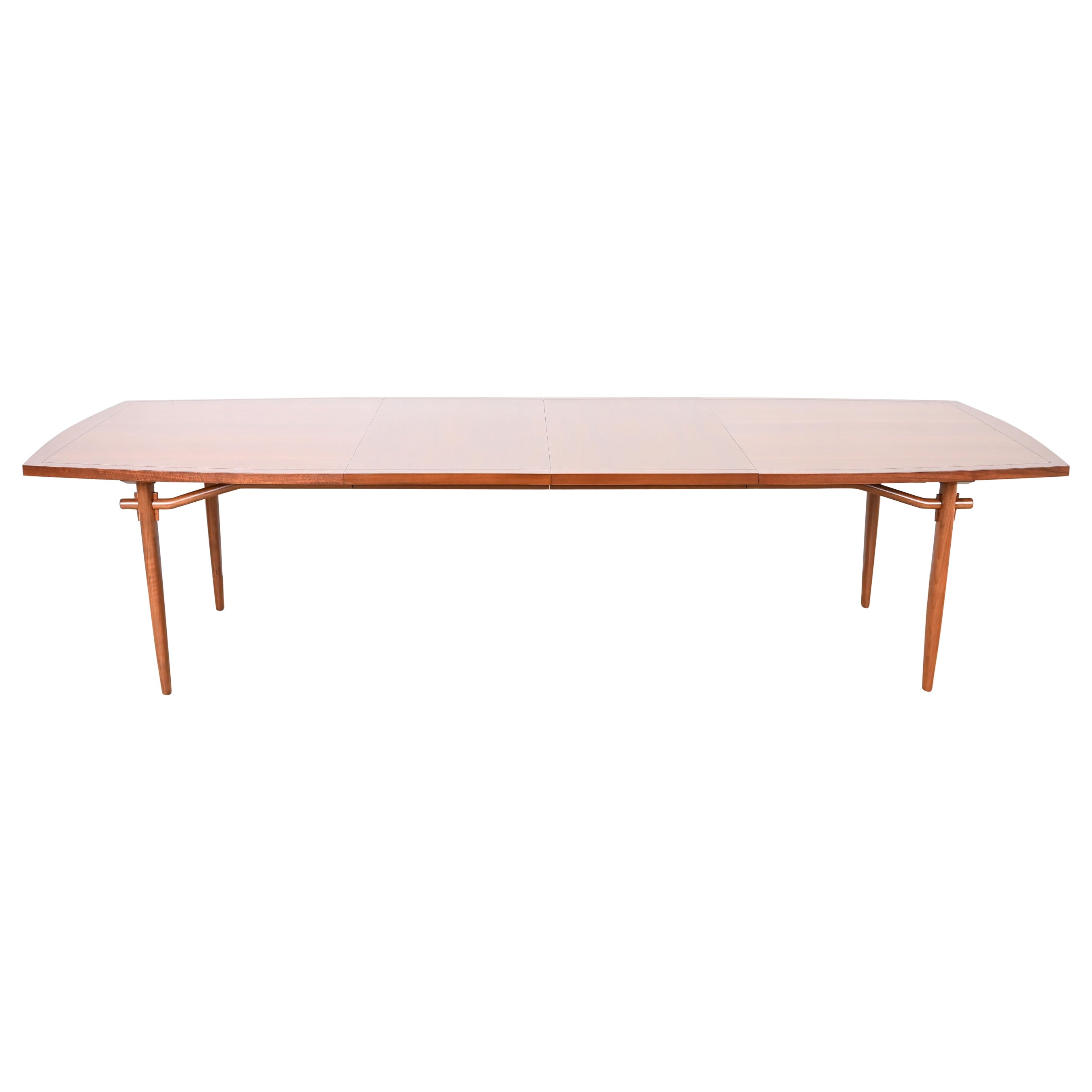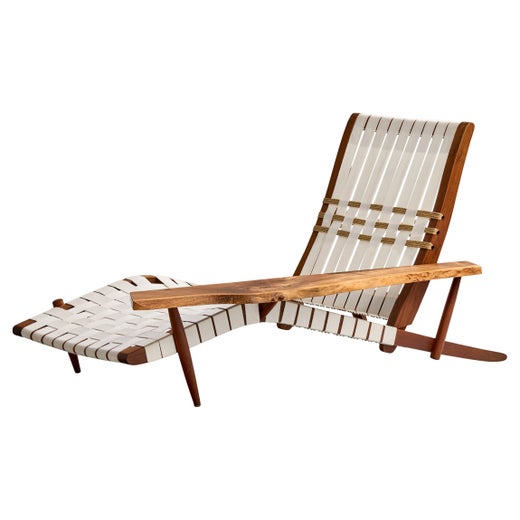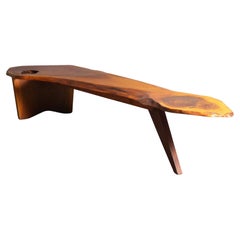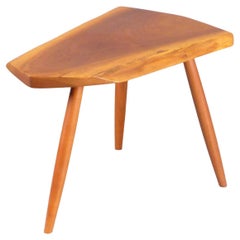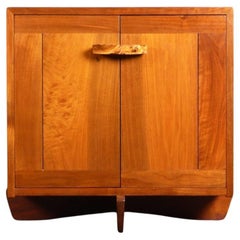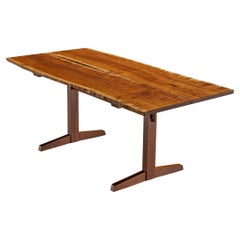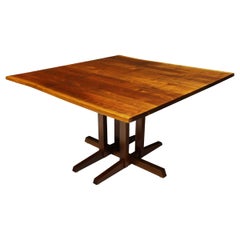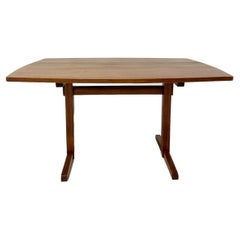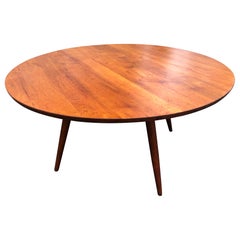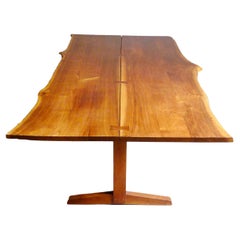
George Nakashima, American Black Walnut Free-Edge Trestle Dining Table, 1960
View Similar Items
George Nakashima, American Black Walnut Free-Edge Trestle Dining Table, 1960
About the Item
- Creator:George Nakashima Studio (Cabinetmaker),George Nakashima (Designer)
- Dimensions:Height: 29.14 in (74 cm)Width: 83.86 in (213 cm)Depth: 44.89 in (114 cm)
- Style:Mid-Century Modern (Of the Period)
- Materials and Techniques:
- Place of Origin:
- Period:
- Date of Manufacture:1960
- Condition:Wear consistent with age and use. Very good condition.
- Seller Location:Wargrave, GB
- Reference Number:Seller: Nakashima Trestle Table F8691stDibs: LU839540822992
George Nakashima
A master woodworker and M.I.T.-trained architect, George Nakashima was the leading light of the American Studio furniture movement. Along with Wharton Esherick, Sam Maloof and Wendell Castle, Nakashima was an artisan who disdained industrial methods and materials in favor of a personal, craft-based approach to the design of chairs, coffee tables and other pieces. What sets Nakashima apart is the poetic style of his work, his reverence for wood and the belief that his furniture could evince — as he put it in the title of his 1981 memoir — The Soul of a Tree.
Born in Spokane, Washington, to Japanese immigrants, Nakashima traveled widely after college, working and studying in Paris, Japan and India, and at every stop he absorbed both modernist and traditional design influences.
The turning point in Nakashima’s career development came in the United States in 1942, when he was placed in an internment camp for Asian-Americans in Idaho. There, Nakashima met a master woodcarver who tutored him in Japanese crafting techniques. A former employer won Nakashima’s release and brought him to bucolic New Hope, Pennsylvania, where Nakashima set up a studio and worked for the rest of his life. (Master craftsperson Mira Nakashima keeps her father’s legacy alive at the George Nakashima Studio in New Hope today. She has been the artistic director of George Nakashima Woodworkers since her father's death, in 1990.)
Nakashima’s singular aesthetic is best captured in his custom-made tables and benches — pieces that show off the grain, burls and whorls in a plank of wood. He left the “free edge,” or natural contour, of the slab un-planed, and reinforced fissures in the wood with “butterfly” joints.
Almost all Nakashima seating pieces have smooth, milled edges. Nakashima also contracted with large-scale manufacturers to produce carefully supervised editions of his designs. Knoll has offered his Straight chair — a modern take on the spindle-backed Windsor chair — since 1946; the now-defunct firm Widdicomb-Mueller, the result of a merger between Widdicomb and Mueller Furniture, issued the Shaker-inspired Origins collection in the 1950s.
Nelson Rockefeller in 1973 gave Nakashima his single largest commission: a 200-piece suite for his suburban New York estate. Today, Nakashima furniture is collected by both the staid and the fashionable: his work sits in the collections of the Philadelphia Museum of Art, New York’s Metropolitan Museum of Art and the Smithsonian Institution, as well as in the homes of Steven Spielberg, Brad Pitt, Diane von Furstenberg and the late Steve Jobs.
Find vintage George Nakashima furniture for sale on 1stDibs.
George Nakashima Studio
A master woodworker and M.I.T.-trained architect, George Nakashima was the leading light of the American Studio furniture movement. Along with Wharton Esherick, Sam Maloof and Wendell Castle, Nakashima was an artisan who disdained industrial methods and materials in favor of a personal, craft-based approach to the design of chairs, coffee tables and other pieces. What sets Nakashima apart is the poetic style of his work, his reverence for wood and the belief that his furniture could evince — as he put it in the title of his 1981 memoir — The Soul of a Tree.
Born in Spokane, Washington, to Japanese immigrants, Nakashima traveled widely after college, working and studying in Paris, Japan and India, and at every stop he absorbed both modernist and traditional design influences.
The turning point in Nakashima’s career development came in the United States in 1942, when he was placed in an internment camp for Asian-Americans in Idaho. There, Nakashima met a master woodcarver who tutored him in Japanese crafting techniques. A former employer won Nakashima’s release and brought him to bucolic New Hope, Pennsylvania, where Nakashima set up a studio and worked for the rest of his life. (Master craftsperson Mira Nakashima keeps her father’s legacy alive at the George Nakashima Studio in New Hope today. She has been the artistic director of George Nakashima Woodworkers since her father's death, in 1990.)
Nakashima’s singular aesthetic is best captured in his custom-made tables and benches — pieces that show off the grain, burls and whorls in a plank of wood. He left the “free edge,” or natural contour, of the slab un-planed, and reinforced fissures in the wood with “butterfly” joints.
Almost all Nakashima seating pieces have smooth, milled edges. Nakashima also contracted with large-scale manufacturers to produce carefully supervised editions of his designs. Knoll has offered his Straight chair — a modern take on the spindle-backed Windsor chair — since 1946; the now-defunct firm Widdicomb-Mueller, the result of a merger between Widdicomb and Mueller Furniture, issued the Shaker-inspired Origins collection in the 1950s.
Nelson Rockefeller in 1973 gave Nakashima his single largest commission: a 200-piece suite for his suburban New York estate. Today, Nakashima furniture is collected by both the staid and the fashionable: his work sits in the collections of the Philadelphia Museum of Art, New York’s Metropolitan Museum of Art and the Smithsonian Institution, as well as in the homes of Steven Spielberg, Brad Pitt, Diane von Furstenberg and the late Steve Jobs.
Find George Nakashima Studio furniture for sale on 1stDibs.
More From This Seller
View AllVintage 1960s American Mid-Century Modern Coffee and Cocktail Tables
Walnut
Vintage 1980s American Mid-Century Modern End Tables
Walnut
Vintage 1960s American Mid-Century Modern Coffee and Cocktail Tables
Walnut
Vintage 1970s American Mid-Century Modern Cabinets
Walnut, Burl
Vintage 1950s American Mid-Century Modern Coffee and Cocktail Tables
Walnut
Vintage 1960s American Mid-Century Modern Nesting Tables and Stacking Ta...
Oak, Burl
You May Also Like
Vintage 1980s American Mid-Century Modern Dining Room Tables
Walnut
Mid-20th Century North American Mid-Century Modern Dining Room Tables
Walnut
Vintage 1960s American Dining Room Tables
Cherry, Walnut
Vintage 1960s American Mid-Century Modern Dining Room Tables
Walnut
20th Century American Dining Room Tables
Wood
Vintage 1960s American Mid-Century Modern Coffee and Cocktail Tables
Walnut
